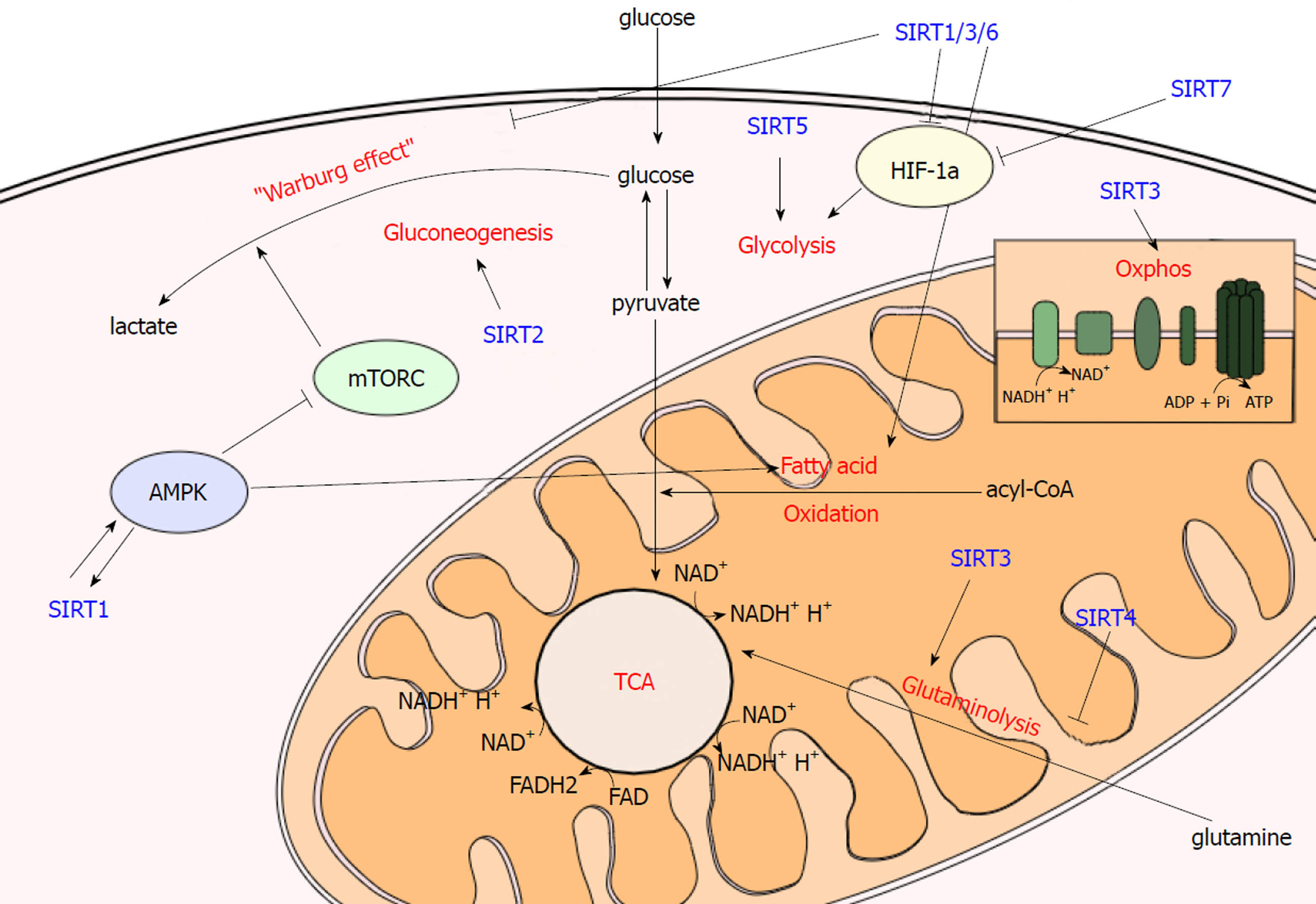Copyright
©The Author(s) 2019.
Figure 1 Sirtuins and metabolism.
SIRTs are metabolic sensors that modulate a variety of metabolic pathways, including glycolysis (Warburg effect), gluconeogenesis, fatty acid oxidation, glutaminolysis, TCA cycle and OXPHOS. SIRTs 1, 3 and 6 restrain the glycolytic pathway through HIF-1α inhibition or direct effects. SIRT3 upregulates OXPHOS pathway by enhancing the activity of the mitochondrial complexes I, II and III and dampening ROS production. SIRT1 is also able to increase the fatty acid oxidation by activating PPAR-α and PGC1-α, while SIRT3 upregulates the fatty acid oxidation upon caloric restriction conditions. SIRT2 induces gluconeogenesis. SIRT3 and 4 activates and inhibits, respectively, the glutaminolysis by regulating the GDH activity. SIRT5 increases glycolysis by increasing the activity of the GAPDH enzyme. SIRT7 can also repress HIF-1α and therefore inhibit transcription of glycolytic genes. At last, SIRT1 performs a positive feedback loop with AMPK, since AMPK rises NAD+ levels in cells, which in turn enhances SIRT1 activity and lastly leads to AMPK activation. AMPK suppresses glycolysis via mTORC1 inhibition and promotes fatty acid oxidation. In the Figure, SIRTs are represented based on their functions only and not by localization. AMPK: AMP-activated protein kinase; GAPDH: Glyceraldehyde 3-phosphate dehydrogenase; GDH: Glutamate dehydrogenase enzyme; HIF-1α: Hypoxia-inducible factor 1-alpha; mTORC1: Target of rapamycin complex 1; NAD+: Nicotinamide adenine dinucleotide; OXPHOS: Oxidative phosphorylation; PGC1-α: Proliferator-activated receptor γ coactivator-1α; PPAR-α: Peroxisome proliferator-activated receptor alpha; ROS: Reactive oxygen species; SIRTs: Sirtuins; TCA: Tricarboxylic acid.
- Citation: Ghirotto B, Terra FF, Câmara NOS, Basso PJ. Sirtuins in B lymphocytes metabolism and function. World J Exp Med 2019; 9(1): 1-13
- URL: https://www.wjgnet.com/2220-315X/full/v9/i1/1.htm
- DOI: https://dx.doi.org/10.5493/wjem.v9.i1.1









